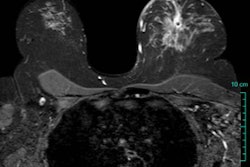With apologies to Mark Twain, the reports of MRI's demise have been greatly exaggerated. Lately it has been popular to be Chicken Little, proclaiming that the revenue sky is falling all around MRI.
Taken at face value, it would appear that diagnostic imaging, and particularly MRI, is on its deathbed, thanks to the reimbursement cuts initiated by the Deficit Reduction Act (DRA) of 2005. The mourners are gathering, the buzzards are circulating overhead, and we're about to put MRI 6 feet under.
But wait! What's that on the horizon?
It is an enormous bolus of patients approaching an age when per capita annual imaging needs increase dramatically. In essence, the baby boomers will present the opportunity for significant increases in volume which, when combined with the market consolidation we're seeing, look to present a rosy financial future for MRI.
Yes, it's true that the DRA is probably the opening salvo in a series of reimbursement cuts, but there is enough room in much of the industry for process improvements to continue to offset at least part of the impact of the cuts through greater volume. And there's already concern about the unintended consequences of the first round of DRA cuts.
"The only thing (the Centers for Medicare and Medicaid Services [CMS]) hates more than an expensive procedure is an inexpensive one," according to Grant Bagley, a former CMS director. His comment highlights a grave concern about the impact of low-cost (or at least lower-cost) MRI exams.
Physicians have always had an awareness of the relative expense of MRI exams, and even with defensive-medicine scans, procedural cost has presented a mild deterrent to sending patients for studies with questionable value. While we're not likely to see MRI exams compete on a direct-cost basis with plain radiography in the foreseeable future, as the price per MRI procedure is driven down, so too is the deterrent against sending patients for exams with marginal clinical value.
In the months to come, we can expect to see private payors follow CMS' lead and reduce reimbursement for MRI exams, which will fuel another round of market consolidation. The MRI equipment manufacturers are already working on products and protocols to dramatically cut imaging time on table and to help facilitate greater throughput. These factors are likely to fall into place just in time for the most dramatic demographic-driven increases in utilization.
The DRA may have temporarily cut federal expenditures for MRI studies, but it has put into motion a whole set of market changes that will be to the decided advantage of the players who are still in the market five years from now.
By Robert Junk and Tobias Gilk
AuntMinnie.com contributing writers
November 8, 2007
Reprinted from www.mri-planning.com by permission of the authors. If you would like more information on any aspect of MR facility design or safety, please contact Robert Junk or Tobias Gilk at MRI-Planning.com.
Related Reading
Joint Commission MR safety surveys: Moving past the fire extinguisher, August 29, 2007
Total process management for efficient MRI suites, August 8, 2007
What does your MRI vendor know about your quench vent that you don't? July 3, 2007
Stand around and wait -- stat! What's your imaging suite emergency procedure? June 11, 2007
MR guidelines: Elevating standards of practice and care, May 10, 2007
Copyright © 2007 MRI-Planning



















